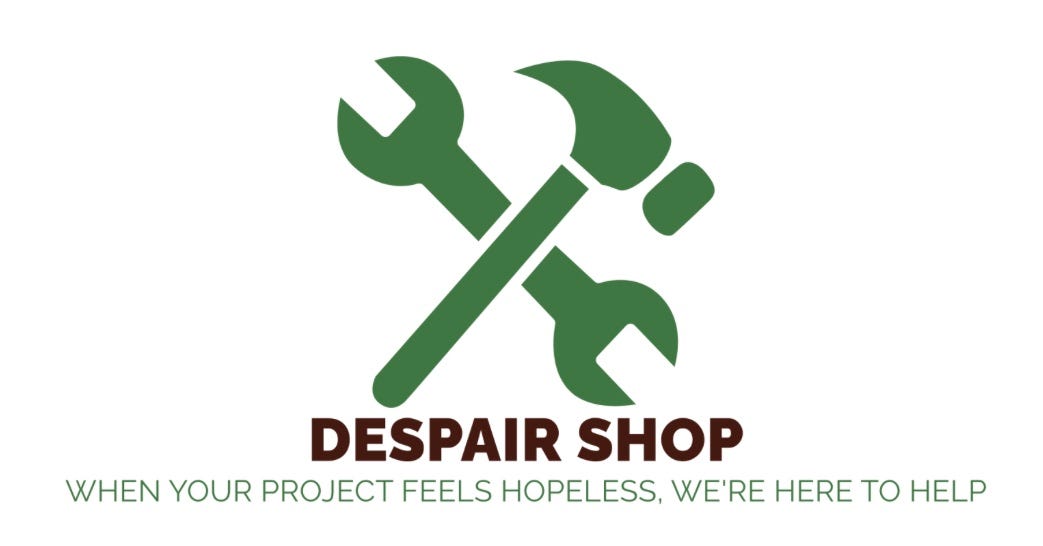
I set up a new web domain today. It is despairshop.com
It is partially satirical and partially practical.
I am working on a few projects where the ideas behind DespairShop are relevant.
There are two key issues: only one of which is addressed by the current webpage. I will explain both in this post.
Despair during an existing project
If you read the current page, it is about helping teams and organisations who are already working on projects and feel that they have lost direction.
This is the sense of despair that builds up as a project progresses.
There are many design tools, like Agile and Design Thinking, but their value can drop as the weight of evidence builds up with more and more user research and prototypes. Deepening understanding of context can overwhelm roadmaps and toolsets. Projects keep moving forward but the destination is hard to perceive. Teams lose their orientation: unsure where they are or where they are going.
This is a situation I have dealt with before now. Using wayfinding tools to enable people to recover their sense of place and direction.
The ideas of what to do when Lost are useful here.
- Understand that moving forward is not always helpful
- Realise the importance of stopping
- Enable going backwards
I have run workshops for projects where teams have lost orientation: both misorientation and disorientation. The design tools the team use cannot help them because they do not know where they are.
In the sense, the Despair Shop is an intervention to help organisations when they feel hopeless during a project. Resetting and reframing the project so people can carry on successfully.
Despair preventing a new project
The as yet unwritten part of DespairShop is related to work I am doing designing workshops for the Design Council in UK on the systemic design tools and the Climate Crisis.
The toolkit they have created and the workshops I am writing, based on that toolkit, offer ways of not merely designing new products and services but building new connections and communities. That broader sense of design is important.
However, there is also a problem with despair.
The Climate Crisis is vast. The failure to take meaningful action is ongoing.
It is hard to hold a sense of positive hope when suffocated by an atmosphere of doomism.
There are many toolkits for designing responsible and sustainably. The problem can be the sense of despair preventing projects starting.
This is why tools around individual confidence, communal connection, narrative communication and project orientation are important.
Getting people to start a project starts with people feeling that they can create change. The Design Council provide an interesting 4 characteristics of changemakers chart: connector, systemic thinking, designer and storyteller.
This is where hope springs. Providing clarity about personal capacity and what skills to acquire or to seek out in other people.
DespairShop, in this context, is about meeting and holding people so they can start a project. The tools are about first steps, beginnings, invitations, welcomes and communities.
Systemic tools and process toolkits need to be founded in humanity and hope to work. It is very easy to believe the tools are what save us when it is us that saves us.
DespairShop
As I wrote at the start, DespairShop is a joke but it is has a serious point.
Systems and tools often fail but people, individually and communally, imagine the failure is theirs: that the error is in their humanity.
More than anything else, as a human-centered designer, I want people to feel confident in the power of their humanity. Finding our own sense of place and direction in projects and in change.